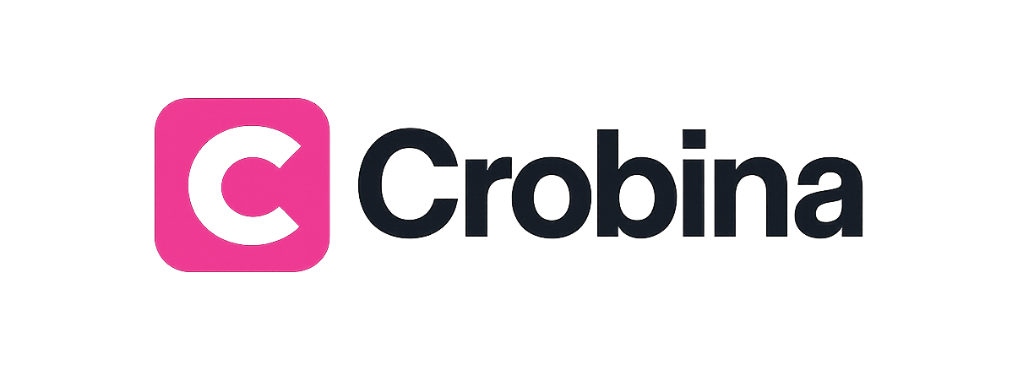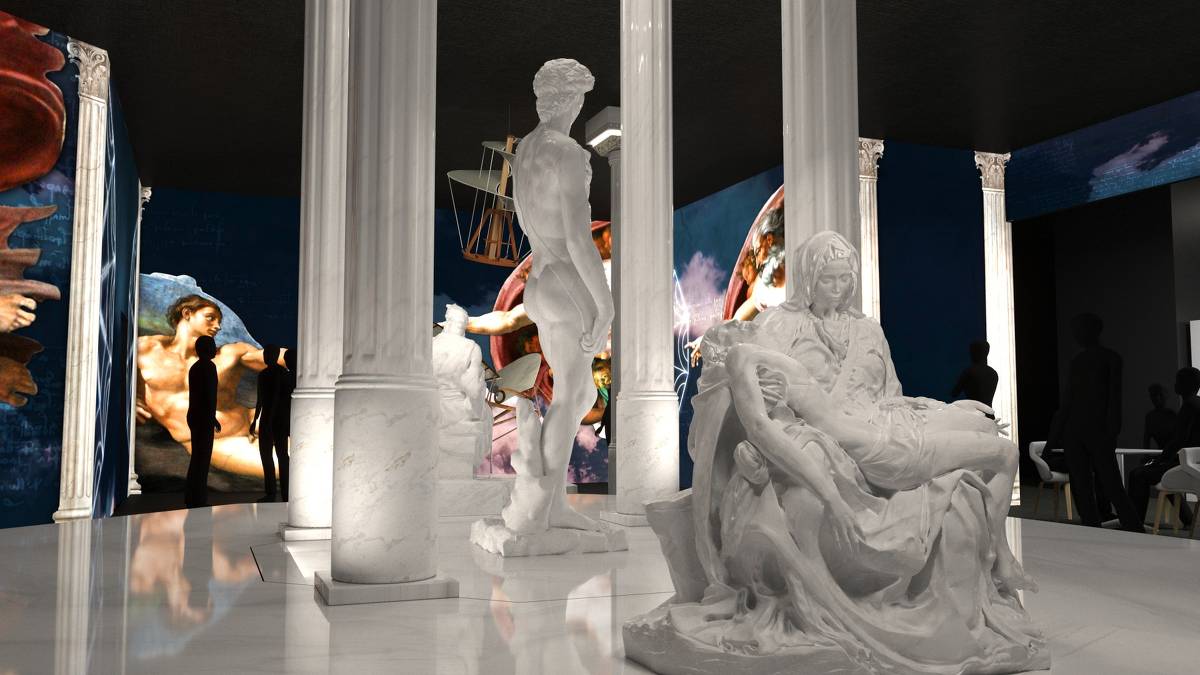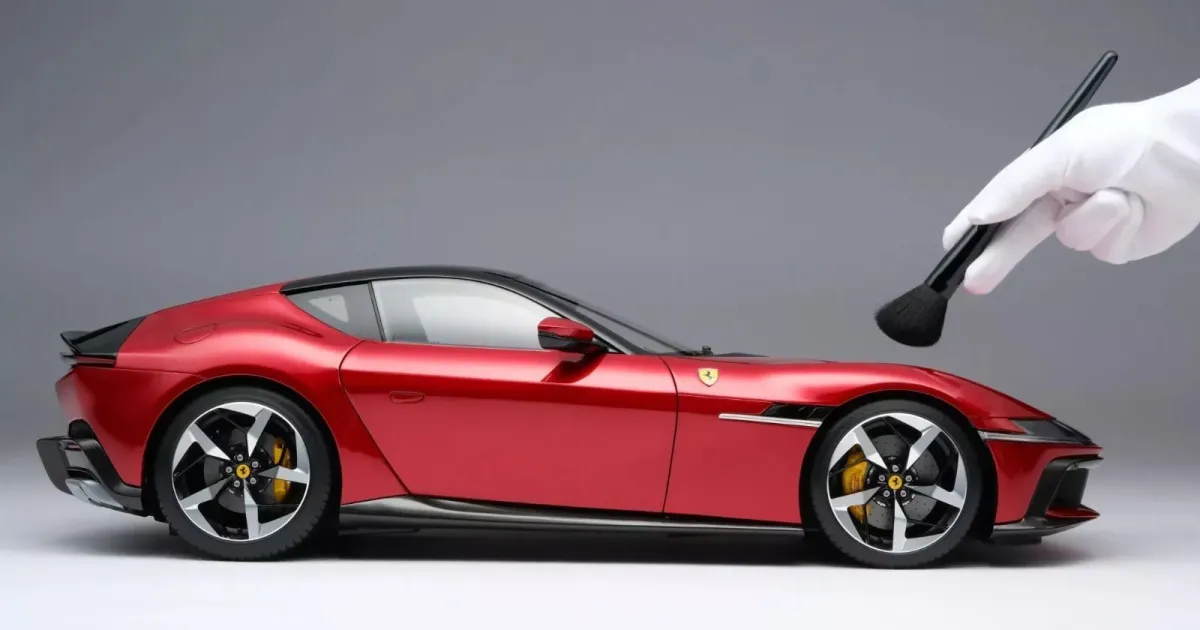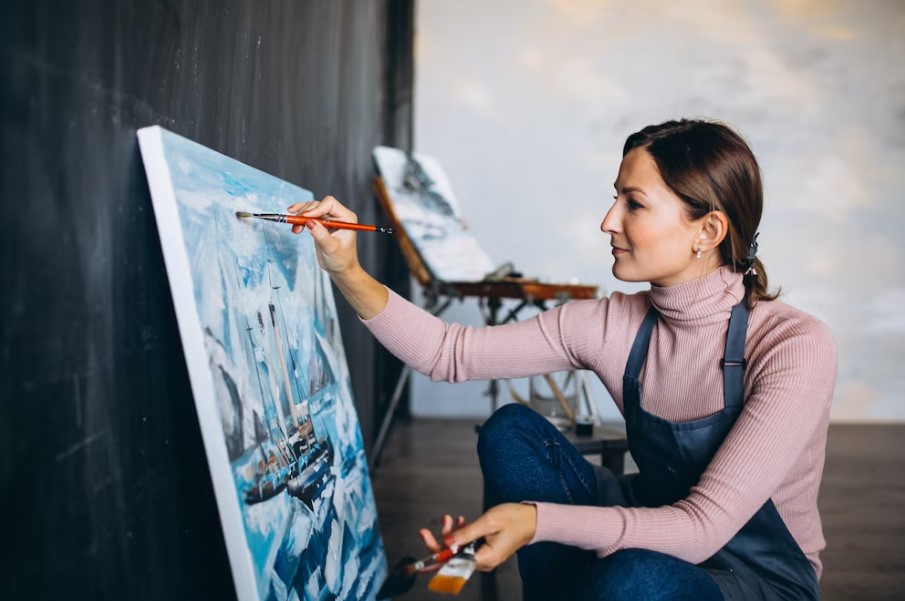The world of miniature sculpting demands patience, precision, and the right tools. Mastering micro tools opens endless creative possibilities for artists and hobbyists alike.
🎨 The Rise of Micro Sculpting in Contemporary Art
Micro sculpting has emerged as one of the most captivating forms of artistic expression in recent years. This specialized craft involves creating incredibly detailed miniature sculptures using tools specifically designed for precision work. Artists worldwide are discovering that working on a smaller scale doesn’t diminish impact—instead, it intensifies focus and demands absolute control over every stroke and carving motion.
The appeal of micro sculpting extends beyond traditional art circles. Miniature enthusiasts, jewelry makers, model builders, and even dental technicians rely on micro tools to achieve the intricate details their work requires. This convergence of artistic passion and technical precision has created a thriving community of practitioners who continuously push the boundaries of what’s possible at diminutive scales.
Understanding the fundamentals of micro tool manipulation transforms average craftsmanship into extraordinary artistry. The journey from beginner to master requires dedication, but the rewards include the ability to create pieces that captivate viewers and showcase technical prowess that few can replicate.
Essential Micro Tools Every Sculptor Needs
Building a comprehensive micro tool collection begins with understanding the function of each instrument. Quality tools represent an investment in your craft, and selecting the right pieces makes the difference between frustration and flowing creativity.
Precision Carving Blades and Knives
Micro carving knives feature ultra-sharp blades ranging from 0.5mm to 3mm in width. These specialized cutting instruments allow sculptors to remove material with surgical precision. High-carbon steel blades maintain their edge longer, while ceramic options provide exceptional sharpness for delicate materials like polymer clay and wax.
The handle design significantly impacts control. Ergonomic grips reduce hand fatigue during extended sculpting sessions, while knurled surfaces prevent slippage. Many professional sculptors maintain multiple blade angles in their toolkit—straight, curved, and hooked varieties each serve specific purposes in the creative process.
Needle Tools and Detail Shapers
Needle tools rank among the most versatile instruments in micro sculpting. These fine-pointed implements excel at scoring surfaces, creating texture, and defining minute details like facial features or fabric folds. Double-ended needle tools maximize efficiency by offering different point sizes on a single instrument.
Detail shapers with silicone or rubber tips provide smooth blending capabilities without leaving tool marks. These tools work exceptionally well for softening edges, creating gradual transitions, and refining surfaces before the final finishing stage.
Micro Files and Abrading Tools
Precision files in various profiles—flat, round, half-round, and triangular—enable controlled material removal and surface refinement. Diamond-coated micro files excel when working with harder materials like metal, resin, or cured polymer clay. These tools create smooth surfaces and crisp edges that define professional-quality work.
Flexible sanding sticks with progressive grit ratings allow gradual surface refinement. Starting with 400-grit and progressing through 2000-grit or higher produces glass-smooth finishes that showcase intricate details without distracting surface imperfections.
🔍 Materials That Respond Beautifully to Micro Tools
Material selection dramatically influences sculpting experience and final results. Different substances respond uniquely to micro tool manipulation, and understanding these characteristics helps artists choose the ideal medium for their vision.
Polymer Clay for Beginners and Professionals
Polymer clay remains the most accessible material for micro sculpting. Its pliability allows detailed work without hardening prematurely, and oven-curing provides permanent results. Brands vary in firmness—softer varieties suit blending and smooth forms, while firmer compositions hold crisp details better.
The material accepts fine textures beautifully, and micro tools leave clean impressions without dragging or tearing. After curing, polymer clay can be sanded, drilled, and painted, offering extensive finishing options. This versatility makes it ideal for jewelry components, miniature figures, and decorative elements.
Sculpting Wax for Metal Casting
Jewelry designers and sculptors preparing pieces for metal casting often work in sculpting wax. This material carves smoothly under micro blades, producing incredibly fine details that transfer perfectly through the lost-wax casting process. Temperature affects wax workability—warming softens it for blending, while cooling creates firmness for precise carving.
Purple and green jewelry waxes offer different hardness levels suitable for various applications. The material’s translucency allows artists to observe work from multiple angles, ensuring symmetry and proportion accuracy in three-dimensional forms.
Air-Dry and Epoxy Clays
Air-dry clays provide convenience without requiring special curing equipment. Modern formulations maintain workability for extended periods, giving sculptors time to refine details. These materials shrink slightly during drying, which artists must account for in sizing calculations.
Epoxy clays offer exceptional strength after curing and accept incredibly fine details. The two-part mixture provides a working window before hardening begins, challenging sculptors to work efficiently. Once cured, epoxy clay can be carved, drilled, and sanded like wood, making it suitable for durable miniature creations.
Technique Mastery: From Basic to Advanced
Developing proficiency with micro tools requires progressive skill building. Mastering fundamental techniques creates the foundation for advanced methods that produce museum-quality miniatures.
Proper Tool Holding and Hand Positioning
Hand stability determines sculpting precision. The tripod grip—holding the tool between thumb, index, and middle fingers—provides maximum control. Resting the working hand against the opposite hand or a stable surface creates additional stability, reducing unwanted movements that compromise detail.
Magnification tools like jeweler’s loupes or illuminated magnifiers enhance visibility of microscopic details. Working at 2x to 4x magnification reveals surface imperfections invisible to the naked eye, allowing correction before they become permanent features.
Building Forms from Simple Shapes
Complex sculptures emerge from simple geometric foundations. Beginning with basic spheres, cylinders, and cones, then gradually refining them into desired forms prevents overwhelm and structural problems. This approach ensures proper proportions and balanced compositions.
Additive and subtractive techniques work in harmony. Building up layers creates volume and dimension, while selective removal defines details and creates depth. Alternating between these approaches produces sculptures with realistic anatomy and convincing surface characteristics.
Creating Realistic Textures at Micro Scale
Surface texture brings miniatures to life. Specialized texture tools, stamps, and improvised implements create convincing representations of fabric, skin, bark, stone, and countless other materials. Consistency in texture application maintains realism—random patterns appear more natural than overly uniform ones.
Directional strokes suggest movement and flow. Hair, fur, and fabric wrinkles follow natural patterns that micro tools can replicate when used thoughtfully. Studying reference images before texturing ensures authentic results that enhance rather than distract from the overall composition.
⚙️ Workspace Organization for Micro Sculpting Success
A well-organized workspace dramatically improves sculpting efficiency and enjoyment. Proper lighting, tool storage, and material management eliminate frustrations that interrupt creative flow.
Adjustable LED lighting with color temperature control prevents eye strain during extended sessions. Position lights to minimize shadows across the work surface, allowing clear visibility of details from multiple angles. Magnifying lamps combine illumination and magnification in single units, saving workspace while enhancing visibility.
Tool organization systems keep instruments accessible and protected. Foam inserts with custom cutouts prevent damage to delicate tips while allowing quick identification. Rotating organizers maximize limited workspace by keeping frequently used tools within easy reach without cluttering the immediate working area.
Material storage in airtight containers prevents premature drying and contamination. Label containers with material type, color, and date to maintain inventory awareness. Temperature-controlled storage extends shelf life for sensitive materials like polymer and sculpting wax.
Common Challenges and Practical Solutions
Even experienced sculptors encounter obstacles when working at micro scale. Understanding common problems and their solutions accelerates skill development and reduces frustration.
Dealing with Material Sticking to Tools
Clay and wax adherence to tool surfaces disrupts detail work and damages delicate features. Lubricants like water, cornstarch, or specialized release agents create barriers between materials and tools. Reapply frequently during sculpting sessions, as effectiveness diminishes over time.
Tool temperature affects sticking—cooling metal tools in water reduces adhesion with materials like polymer clay. Conversely, warming tools slightly helps when working with harder waxes that require additional cutting force.
Maintaining Tool Sharpness
Dull tools compromise precision and increase required force, leading to control loss and potential injury. Regular maintenance preserves cutting performance and extends tool life. Fine sharpening stones or diamond plates restore edges on steel blades, while ceramic tools maintain sharpness longer but require professional sharpening when dull.
Proper storage prevents dulling between uses. Blade guards or segregated storage compartments protect cutting edges from contact with other tools. Clean tools after each session to remove material residues that can corrode metal surfaces.
Achieving Symmetry in Miniature Sculptures
Symmetrical forms challenge sculptors working at small scales where millimeter deviations become proportionally significant. Measurement tools like digital calipers ensure matching dimensions on bilateral features. Creating templates or guides provides reference points during the sculpting process.
Working both sides simultaneously rather than completing one side before starting the other maintains awareness of proportional relationships. Frequent comparison from multiple viewing angles catches asymmetries before they require extensive correction.
🏆 Taking Your Skills to Exhibition Level
Transitioning from hobbyist to professional-caliber work requires attention to finishing, presentation, and continuous learning. Polished presentation elevates technical skill into compelling artistry.
Advanced Finishing Techniques
Professional finishes distinguish exceptional work from adequate pieces. Progressive sanding through increasingly fine grits removes tool marks and creates surfaces that accept paint, patina, or polish beautifully. Wet sanding with water or mineral spirits during final stages produces ultra-smooth surfaces without airborne dust.
Sealing and painting require specialized products formulated for miniature work. Thin, multiple coats build color without obscuring fine details. Dry brushing, washes, and weathering techniques add depth and realism that make miniatures visually compelling.
Photography and Documentation
Quality photography showcases intricate details invisible in person without magnification. Macro lenses or extension tubes enable close focusing that captures texture and precision. Diffused lighting eliminates harsh shadows while revealing dimensional qualities.
White or neutral backgrounds prevent distraction from the sculpture itself. Multiple angles document the piece comprehensively, showing details from various perspectives. Scale references like coins or rulers help viewers appreciate the miniature size.
Continuous Learning and Community Engagement
Skill development never truly ends. Online communities, workshops, and tutorials provide ongoing education and inspiration. Sharing work invites constructive feedback that identifies improvement areas invisible to the creator.
Studying master sculptors’ techniques reveals approaches and solutions applicable to personal projects. Experimenting with unfamiliar materials and methods expands capabilities and prevents creative stagnation. Challenge projects push skill boundaries and build confidence in handling increasingly complex subjects.
🎯 Transforming Passion into Professional Opportunity
Micro sculpting skills open diverse professional pathways. Understanding market demands and developing business acumen transforms artistic talent into sustainable income.
Custom miniature commissions serve collectors, gamers, and gift seekers willing to pay premium prices for personalized work. Building a portfolio showcasing range and technical capability attracts clients seeking specific styles or subjects. Clear communication about timelines, pricing, and revision policies establishes professional relationships.
Teaching workshops and creating educational content monetizes expertise while building reputation within the community. Video tutorials, written guides, and in-person classes serve different learning preferences. Subscription platforms provide recurring revenue from supporters who value ongoing content.
Product development leveraging sculpting skills includes creating original figurines, jewelry components, and decorative items for retail sale. Limited edition pieces command higher prices than mass-produced items. Collaborations with manufacturers enable broader distribution while maintaining artistic involvement.
The Meditative Benefits of Micro Sculpting
Beyond aesthetic results, micro sculpting provides profound psychological benefits. The focused concentration required creates meditative states that reduce stress and anxiety. Time becomes elastic during deep creative engagement, with hours passing unnoticed while fully absorbed in detailed work.
Hand-eye coordination and fine motor control improve through regular practice. These neurological benefits extend beyond sculpting, enhancing overall dexterity and spatial awareness. The tangible results of sculpting sessions provide satisfaction that digital activities rarely replicate.
Creative problem-solving during sculpting strengthens mental flexibility. Each project presents unique challenges requiring innovative solutions. This cognitive exercise builds resilience and adaptability applicable to life beyond the workspace.
Building Your Micro Sculpting Journey
Beginning a micro sculpting practice requires minimal initial investment. Starter tool sets provide essential implements at accessible prices, allowing exploration before committing to professional-grade equipment. Small material quantities enable experimentation across different mediums without significant financial risk.
Setting realistic expectations prevents discouragement. Early projects may not match envisioned outcomes, but each attempt builds skills transferable to future work. Documenting progress through photographs creates motivating visual evidence of improvement over time.
Establishing regular practice schedules accelerates skill development. Even brief daily sessions maintain momentum and reinforce techniques. Consistency produces better results than sporadic marathon sessions that lead to burnout.
The micro sculpting community welcomes newcomers enthusiastically. Online forums, social media groups, and local maker spaces provide support, advice, and encouragement. Sharing struggles and successes connects artists across skill levels and geographic boundaries.
Mastering precision micro tools transforms creative visions into tangible reality. The journey from curious beginner to confident sculptor unfolds through patient practice, continuous learning, and passion for miniature creation. Every tiny detail carved, every texture perfected, and every finished piece represents growth in this endlessly rewarding artistic discipline. The micro world awaits your skilled hands and creative spirit. ✨
Toni Santos is a visual chronicler and historical researcher who explores the lost language of healing through forgotten instruments and ancient medical design. With a delicate blend of curiosity and reverence, Toni uncovers the mysterious tools once used in temples, apothecaries, and folk practices—objects that echo a time when healing was both art and ritual.
Rooted in a fascination with the intersection of medicine, myth, and craftsmanship, his work traces how past civilizations understood the body, spirit, and cosmos through tools now obscured by time. From vibrational tuning forks and herbal infusion vessels to symbolic scalpels carved with protective motifs, Toni’s visual storytelling gives new life to the technologies that once held deep cultural and curative power.
With a background in historical illustration and material culture, Toni reconstructs these instruments with artistic precision—offering not just images, but narratives that reveal the beliefs, fears, and hopes embedded in the tools of care.
As the visionary behind Vizovex, Toni shares curated archives, interpretive essays, and artifact-inspired artworks that help audiences reconnect with the ancestral roots of healing and the poetic devices once used to restore balance.
His work is a tribute to:
The craftsmanship of early healing technologies
The spiritual symbolism behind medical instruments
The intimate connection between body, tool, and ritual
Whether you’re an enthusiast of forgotten sciences, a student of holistic traditions, or a seeker of the obscure, Toni welcomes you into a world where healing was sacred, and every tool told a story—one wound, one charm, one cure at a time.





